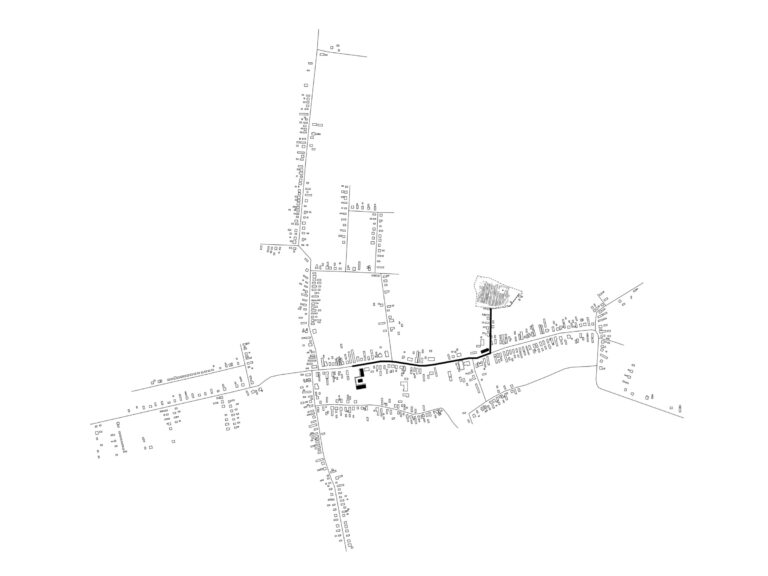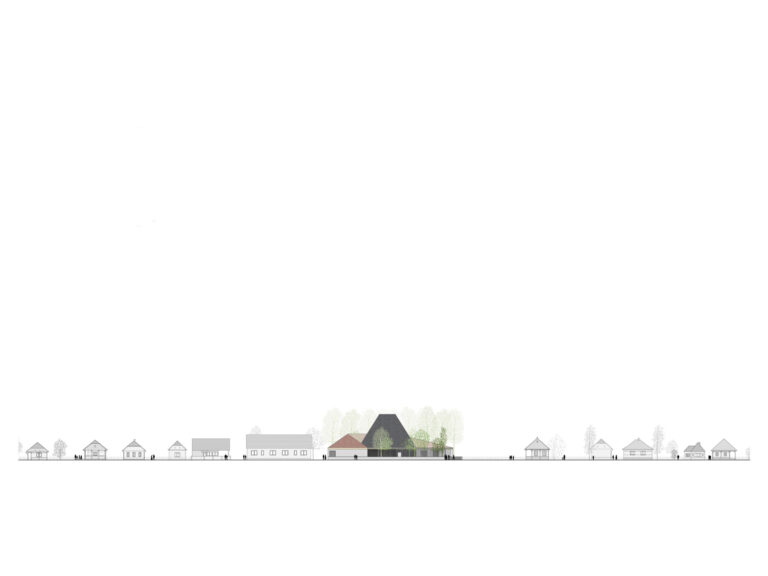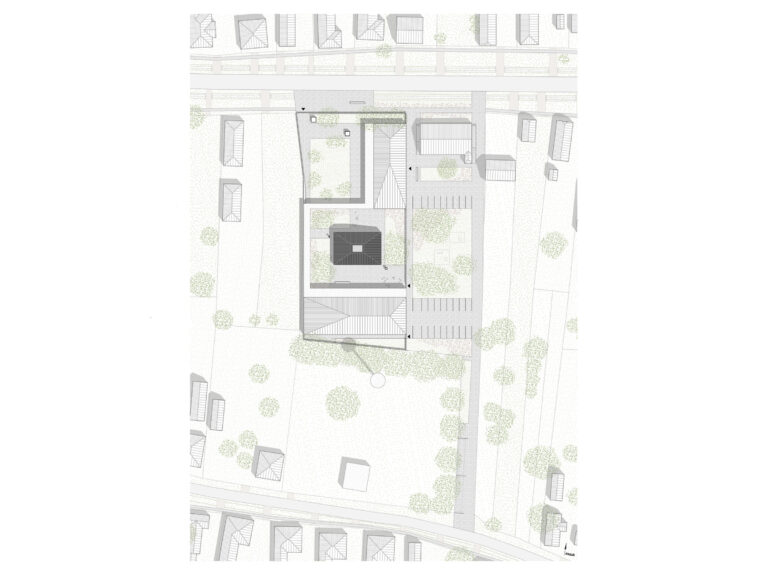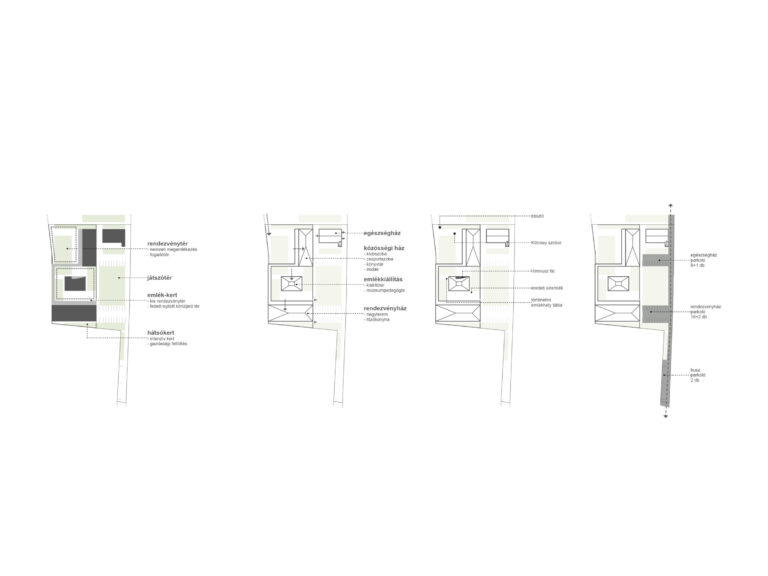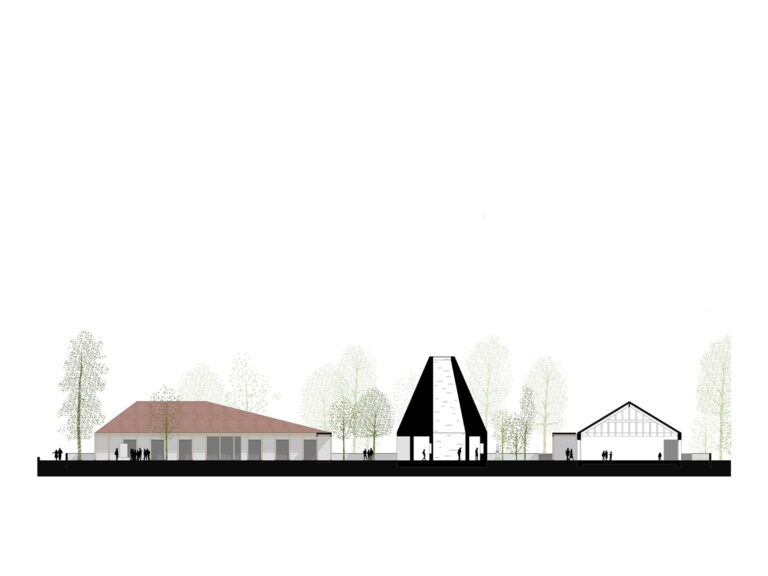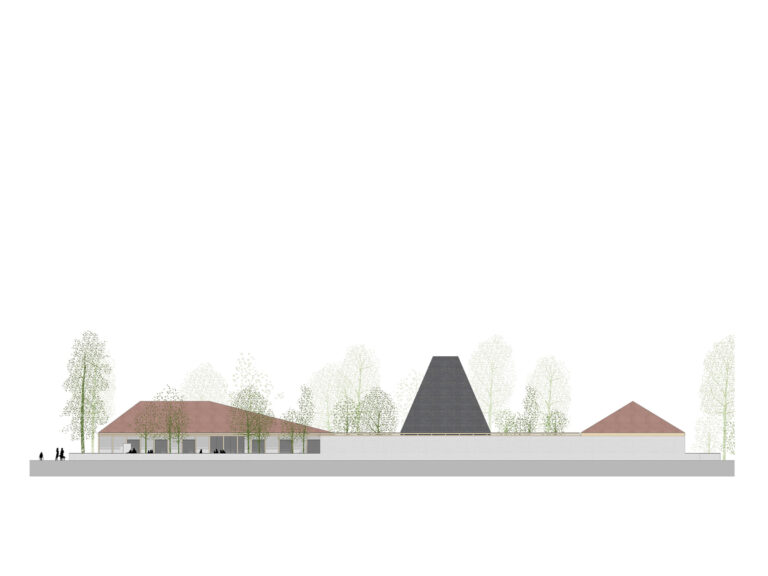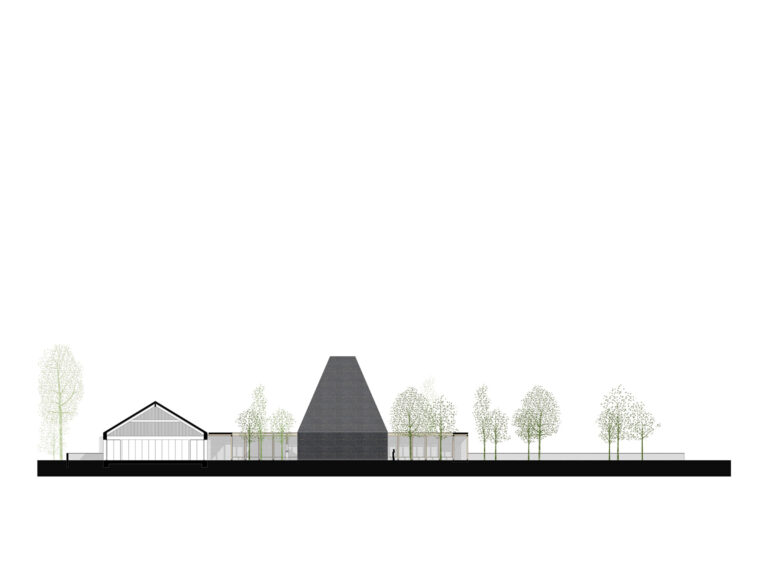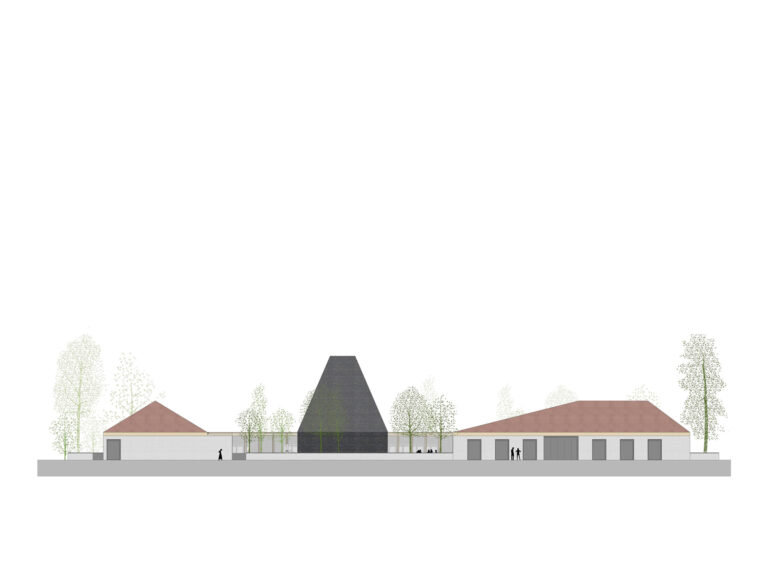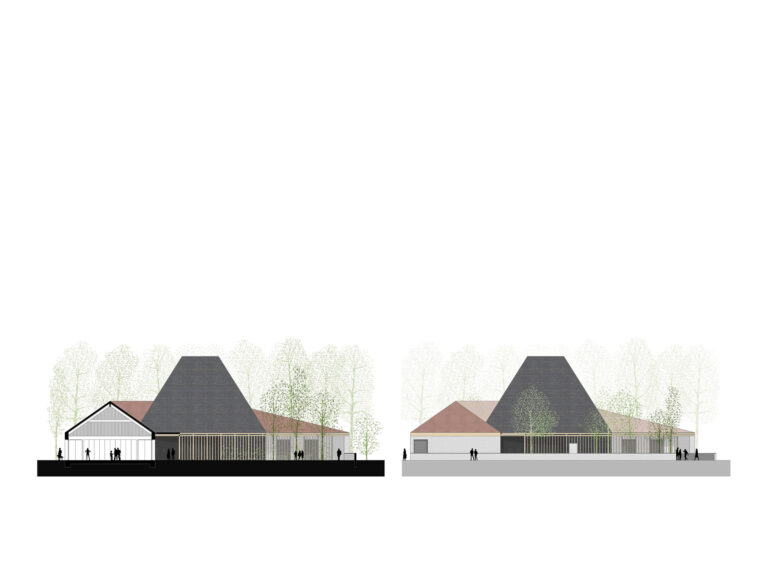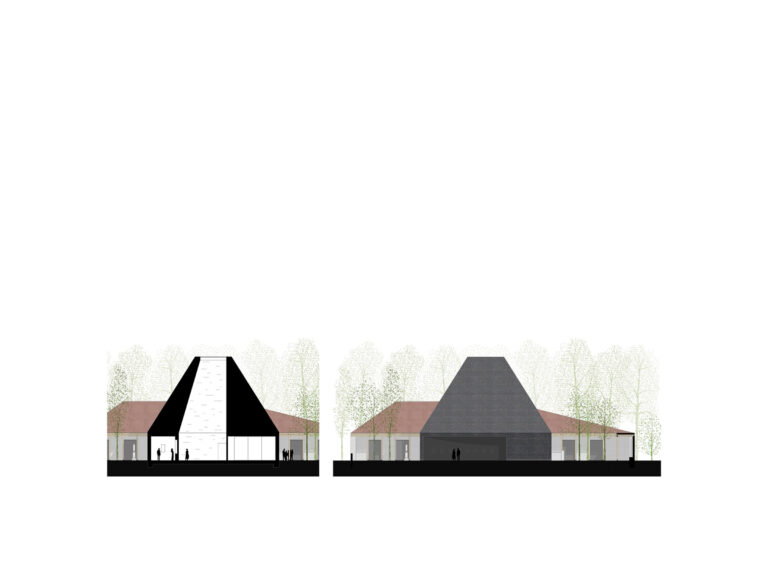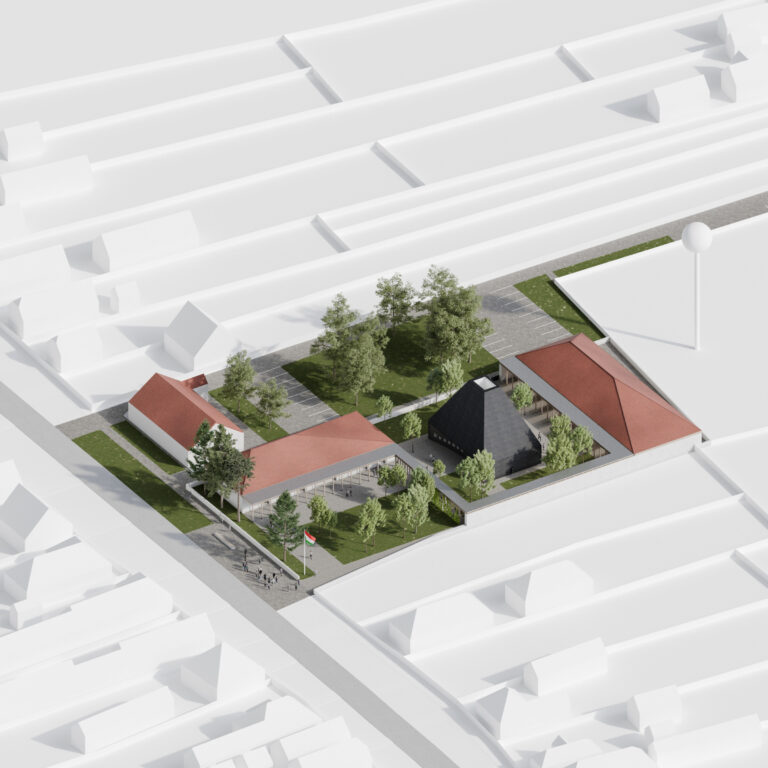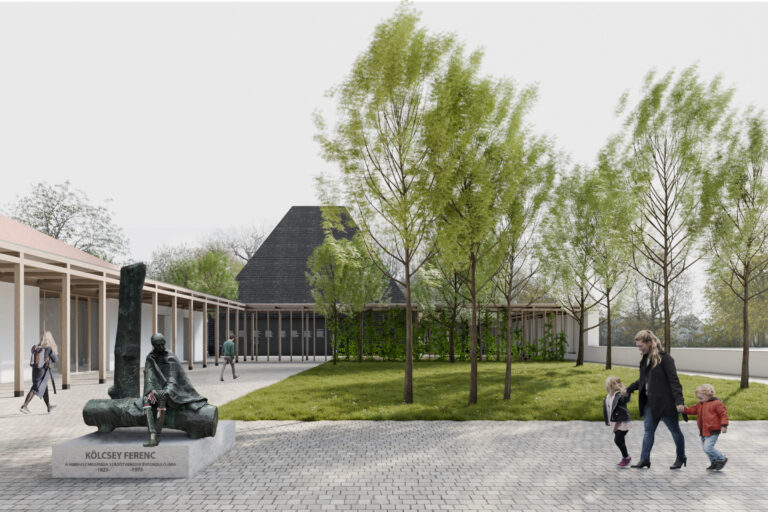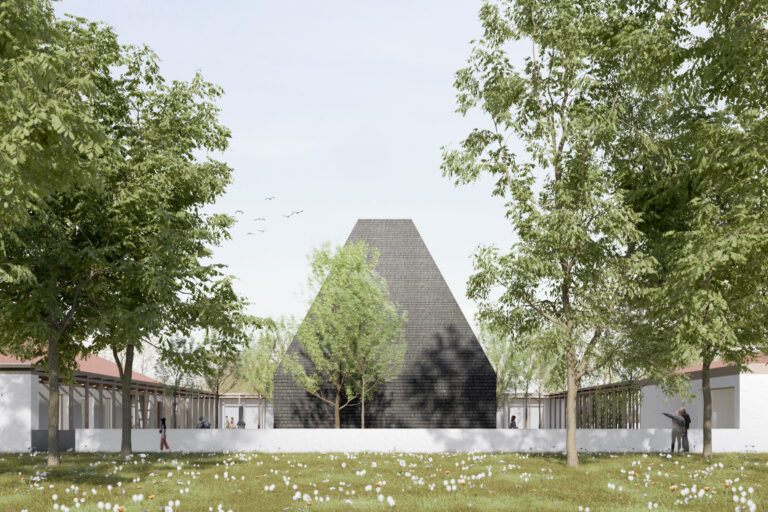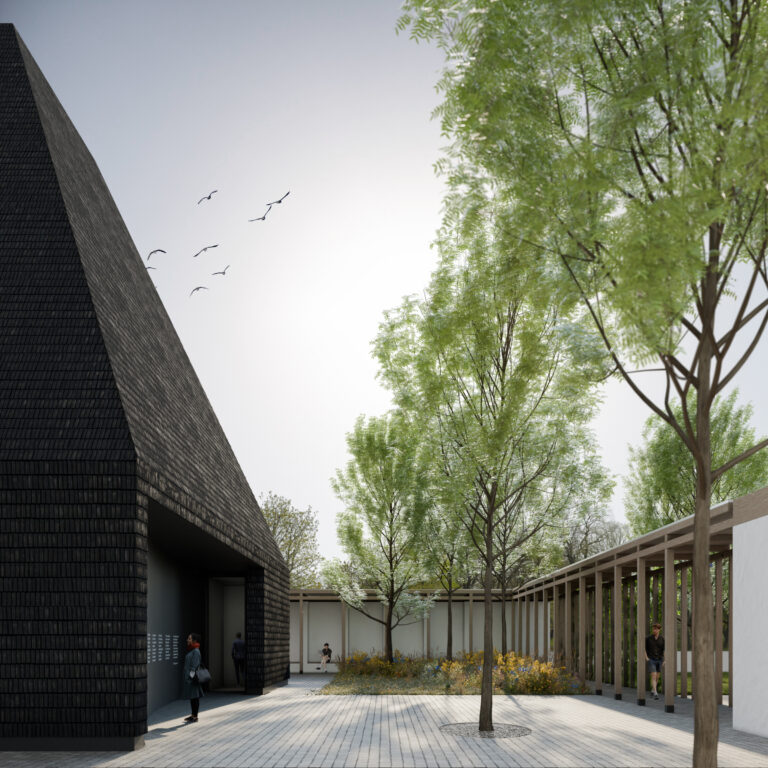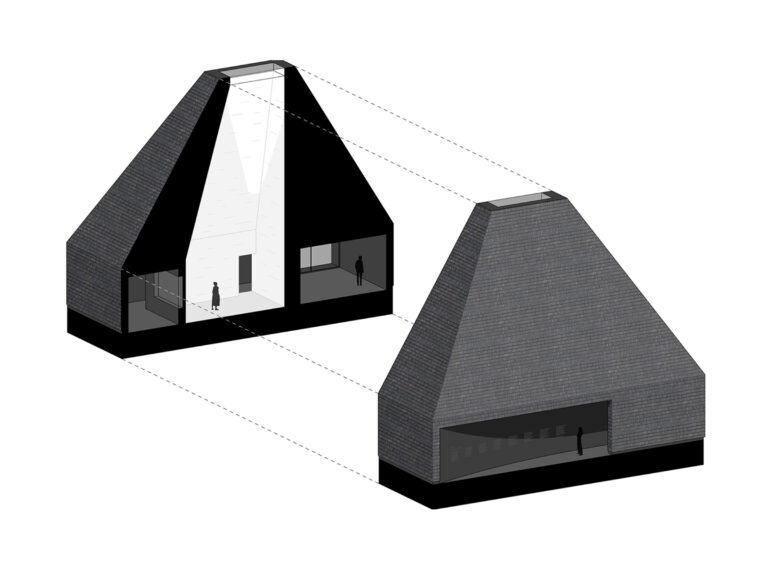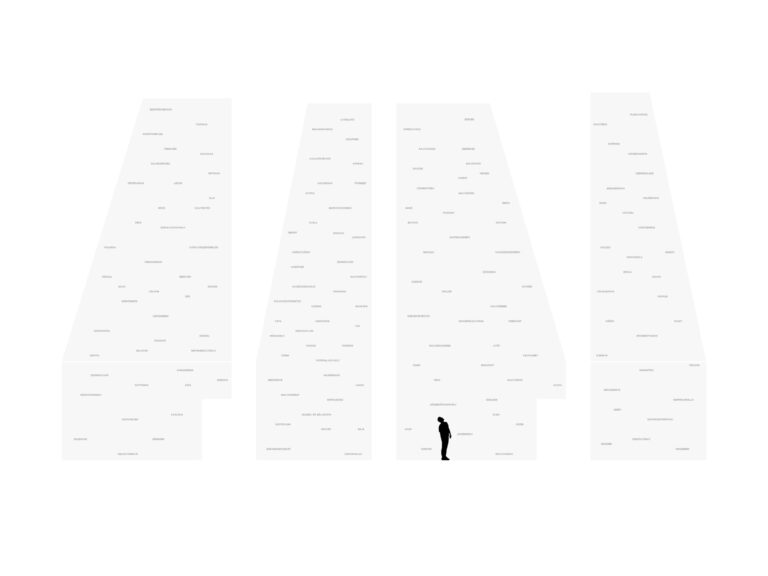National Anthem Memorial Site
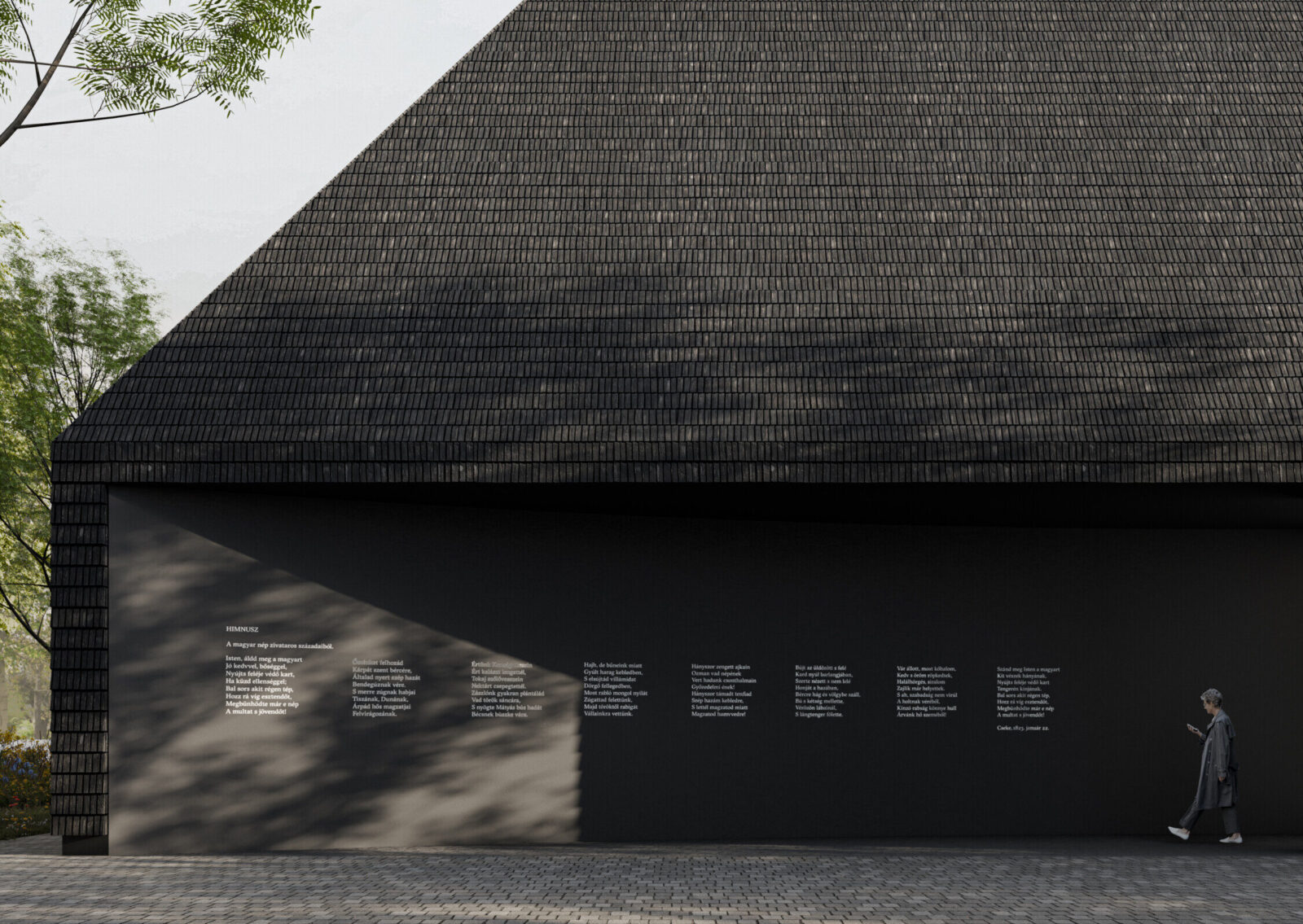
2025
Design competition for the Hungarian National Anthem Memorial Site, Szatmárcseke
Architects: Balázs Biri, Eszter Mantuano, László Rátgéber, Levente Szabó
Ferenc Kölcsey (1790, Sződemeter – 1838, Szatmárcseke), born into a reformed noble family, moved to Szatmárcseke in 1815 and wrote the Hungarian national anthem on 22 January 1823, in memory of which we have celebrated the day of Hungarian Culture on this day since 1989. Our plan aims to adapt to the scale of Szatmárcseke, the diversity of the complex planning programme and the importance and dignity of the planned national memorial site.
The ambition of our concept is twofold: both to create a context for the place, free of exaggerations and proportionate in scale, and at the same time to mark the birthplace of national prayer, which has been part of the Hungarian identity for generations, with emblematic architectural gestures of local and regional character.
Our building proposal therefore breaks down the design programme into several masses, integrating it into the morphology of the settlement, evoking the mass of the Kölcsey-mansion that once stood here and creating a variety of indoor and outdoor communal spaces and gardens.
Our design is guided by the following principles:
– To evoke the open-air development of the former mansion building with a new memorial building for the memorial exhibition.
– The design of the new Anthem memorial not as a separate work of art, but as an architectural and typographic solution integrated into the building complex. The creation of architectural spaces that reinforce the exhibition concept.
– A clear functional separation: the design programme is arranged in three separate masses on a scale that is in keeping with the fabric of the town: the community centre facing the road, the central exhibition space and the rear event hall.
– The use of materials is typical of the area: the simple massing of the longitudinal buildings, which are rendered and tiled, and the shingle-clad central mass, which evokes the character of the former bell tower and the boat-shaped wooden headstones.
